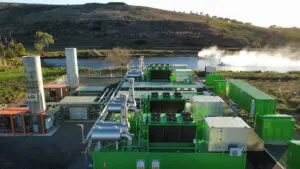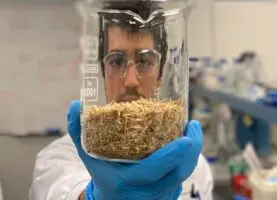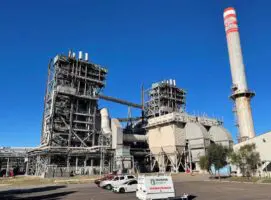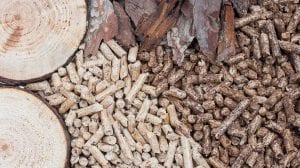Cranes at two major infrastructure projects in NSW will start running on so-called renewable diesel, only, as a key contractor shifts its fleet away from fossil fuels.
The relocated Powerhouse Parramatta museum and the new Sydney Fish Market will see cranes owned by Marr Contracting running on HVO100, or hydrotreated vegetable oil, sourced from the Netherlands.
However, while supporters of HVO100 say it reduces carbon dioxide emissions by up to 90 per cent, this is over the fuel’s life cycle compared to fossil diesel.
Renewable diesel reduces tailpipe emissions by 3.6-6.7%, according to a study by European researchers last year.
The fuel is made from the likes of wood or straw. Unlike biodiesel which is made via transesterification rather than water treatment or hydrogenation, it can be used as a direct replacement for fossil diesel without any additives.
Marr switched to renewable diesel from Finnish engineering company Neste for its cranes in June. The decarbonisation of part of the NSW projects however has also been claimed by the NSW government, Lendlease, Marr Contracting and Refuelling Solutions, and builder Multiplex as their successes as well.
Neste has been contacted for comment about HVO100 emissions.
A work in progress
Although projects are afoot in Australia to begin making renewable diesel at commercial volumes, none are yet operational.
“This allows us to transition away from fossil diesel and maintain the speed, power and reliability of our cranes to drive productivity and cost-efficiencies, while helping our clients achieve their sustainability goals by directly contributing to a reduction in scope one emissions,” said Marr managing director Simon Marr.
Lendlease, the developer of Powerhouse Parramatta, says it already uses renewable diesel in most of its projects in the UK and plans to use that experience to ramp up use in Australia. It wants to reach “absolute zero” carbon dioxide emissions by 2040.
The developers of the Sydney Fish Market, Multiplex, has called on the rest of the industry to get on board.
“This is a critical step towards a net zero carbon future for one of the country’s largest industries, being construction,” said Multiplex regional managing director, David Ghannoum.
“Removing fossil diesel fuel from our sites presents a huge opportunity for our projects and industry to significantly reduce carbon emissions and make a real change.”
The partners declined to reveal how much they’re paying for the new fuel, saying it’s commercial in confidence.
Renewable diesel, not hydrogen or electric, is 2022’s industrial fuel
Although both bio- and renewable diesel are in short supply in Australia for now, a number of projects are in motion to start making the fuels here.
In April, oil and gas developer Carnarvon Energy launched Future Energy Australia, a venture that has started work on building what it calls the country’s first commercial renewable diesel biorefinery project, at Narrogin in Western Australia. It plans to start producing biodiesel by early 2024.
Northern Oil kicked off its $18 million pilot biofuels plant in Yarwun in 2017 but has not taken the idea further.
In April the startup Oceania Biofuels also launched its $500 million “first” renewable diesel refinery in Yarwun, with the backing of the Queensland government, although the first in this case refers to its role as an aviation fuel supplier. It plans to start selling fuel to the US aviation market, where carbon reduction targets are in force for aviation, and Europe in 2025.
The race to bring down construction emissions
Australia’s construction industry is desperately looking for ways to decarbonise after NSW, Victoria and Queensland issued plans or discussion papers aiming a government eye squarely at construction emissions.
Think tank Infrastructure Partnerships Australia in April said embedded carbon needs to be factored into budgets for projects costing more than $100 million.
Construction globally accounts for 37 per cent of carbon dioxide emissions, according to the 2022 Global Status Report for Buildings and Construction. In Australia, carbon dioxide embedded into a building via transport, materials sourcing and construction account for some 10 per cent of total emissions, found the Clean Energy Finance Corporation last year.
“We can’t achieve our target of net zero emissions by 2050 without decarbonising our infrastructure pipeline and the arrival of renewable diesel is a significant milestone in that journey,” said outgoing minister for infrastructure, cities and active transport Rob Stokes.
RenewEconomy has reached out to Stokes for comment.










